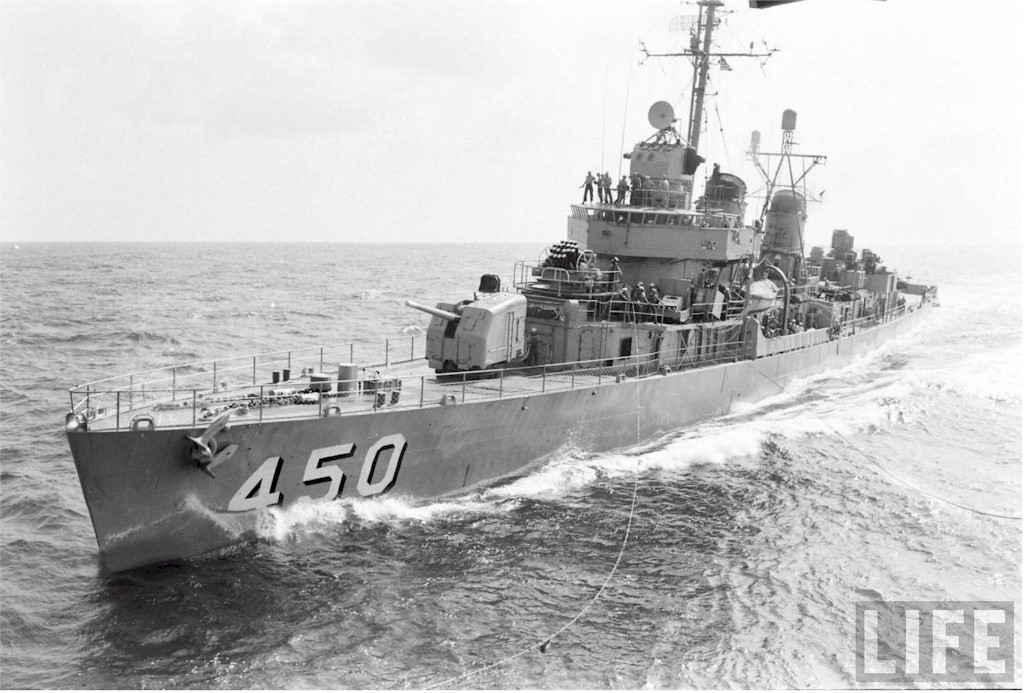Incredible stories of the war, it is thanks to them that we begin to consider the importance of strategy and the ideas that we are capable of occurring.
I heard this story for the first time from a professor at the university. It has always fascinated me because of its originality and for being an example of what we can do under the stress and desperation of war. It is the story of how the sailors of the destroyer USS O’Bannon had to grab the helpful tuber when facing a Japanese submarine in the Pacific during World War II.
Launch and baptism
When it was launched in February 1942, just two months after the attack to Pearl harbour, the O’Bannon was only one of the almost 200 Fletcher Class destroyers destined to the war effort. With its length of 376 ft and armed with 22 cannons of various calibers and 10 torpedo tubes, it was capable of carrying a crew of 325 at 35 knots with a range of 6,500 nautical miles.
After a brief period of training in the Caribbean, the O’Bannon was transferred to the South Pacific in the Summer of that year, when the invading Japanese avalanche was reaching its limits of greatest expansion.
Her baptism of fire arrived pretty soon, during the Solomon Islands campaign. American intelligence has received information that Japanese troops had landed in one of the islands of the archipelago, Guadalcanal, and that those troops were building a landing strip. The High Command quickly realized that if the japanese were able to finish a runway in the area, the navigation routes that linked the United states with the threatened Australia could be cut and the Nipponese advance would be unstoppable.
It was time to cease the withdrawals and take the initiative, disembarking Marines in Guadalcanal and sending a fleet with the leftovers of Pearl Harbour and the new ships arrived in the last few months, among them the O’Bannon.
Guadalcanal
The campaign became one of the hardest fought by both sides, aware of the strategic importance of the position. From August 1942 until February of the following year, three major land battles for the control of the strip and seven Battle of Guadalcanal destroyernaval clashes decided the course of the war for the upcoming months.
The USS O’Bannon took part in all of them as an escort ship to some of the aircraft carriers involved and to the convoys ferrying reinforcements and supplies to the besieged troops in Guadalcanal, in addition to patrolling the channel known as The Slot, to stop the arrival of Japanese reinforcements.
Before the end of the year, Japan abandoned its attempts to recapture the island and in February the last men were evacuated. The O’Bannon was sent to to its base in New Caledonia for repairs and to give her crew a well deserved break. A couple of months later, on the 5th of April 1943, she would have the encounter that put her in the spotlight.
Destroyer vs. Sub
Very early that morning, little more than 12 miles southeast of Finuana Island, a lookout spotted a shadow in the waves. It was the Japanese submarine RO-34. At first, O’Bannon’s Captain Edwin R. Wilkinson gave the order to ram the sub, as it was expected from a destroyer, but, when the prow of the ship was already closing dangerously to RO-34 sunkits target, an officer suggested Wilkinson that it could be a mine-laying submarine, and that a direct hit could cause an explosion that would sink both ships.
In the last moment, the O’Bannon avoided collision after a last ditch maneuver, but it was left next to and parallel to the submarine. The japanese sailors, who were sleeping on the deck, reacted promptly reaching for the 3 inch surface cannons to attack the American ship. Immediately after, the sailors on the deck of the destroyer, unarmed, took some potatoes from crates nearby and began throwing them to the surprised Japanese who, thinking the tubercles were grenades, tried to return them to the destroyer, leaving the cannons unmanned. In their defense, it was pitch dark.
In the confusion, the O’Bannon had time to put enough distance to use its own cannons, which aimed at the RO-34 and hit the target damaging the conning tower, but the sub was able to submerge. Still, it was finally sunk a few minutes later by depth charges from the O’Bannon and other ships. In the bottom, she became the grave for its crew of 66 sailors and officers.
Claim to fame
After the event, which caught the attention of the press, the crew of the then unknown destroyer received a commemorative plaque from the Potato Growers of the State of Maine for “their ingenuity in using our proud potato to uss_obannonpotatoplaque·sink· a Japanese submarine”, an award that was hung in the canteen so that everybody could see it.
In addition to such an illustrious deed, the O’Bannon continued its priceless service until the end of the war, distinguished as the most condecorated destroyer of the conflict, with 17 Battle Stars and even a Presidential Unit Citation, the highest honor paid to US Navy ships, due to the “extraordinary heroism in action against an armed enemy”.
Because of her contribution to victory, it was eventually assigned as one of the escort destroyers to the Battleship Missouri in Tokyo Bay for the official surrender ceremony. All along her battle-hardened life (it was scrapped in 1970), the O’Bannon was widely condecorated, but everybody will remember her as the destroyer that sank a submarine with potatoes.
Fuente: www.cienciahistorica.com
